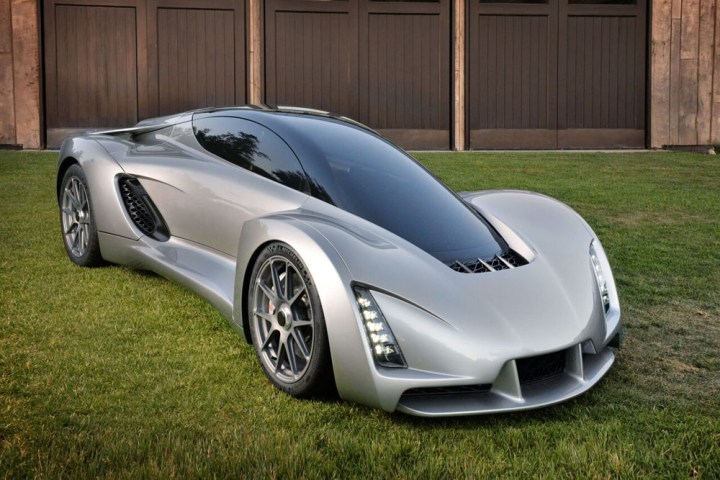
In a recent press release, Divervent described the process of creating Blade as a “disruptive new approach to auto manufacturing”. By making use of 3D printing technology to produce the vehicle, the company expects a massive decrease in pollution, along with the costs typically associated with building automobiles and large, complex structures.
“Society has made great strides in its awareness and adoption of cleaner and greener cars. The problem is that while these cars do now exist, the actual manufacturing of them is anything but environmentally friendly,” says Czinger in the press release. “We’ve developed a sustainable path forward for the car industry that we believe will result in a renaissance in car manufacturing, with innovative, eco-friendly cars like Blade being designed and built in microfactories around the world.”
This sustainable path Czinger talks about centers around a proprietary solution Divergent refers to as a Node: a 3D-printed aluminum joint capable of connecting carbon fiber tubing to form the vehicle’s chassis. According to Divergent, the Node allows it to drastically cut down on the amount of 3D-printing a car chassis typically requires, enabling the company to assemble a car in a matter of minutes. Moreover, a Node-enabled chassis is up to 90 percent lighter than typical automobiles and boasts higher fuel economy.
Technology aside, the Blade is an absolute monster under the hood. Not only does it sport the designation of being one of the greenest cars in the world, but it also happens to be one of the most powerful ever assembled. Outfitted with a 700-horsepower bi-fuel engine capable of consuming either gasoline or compressed natural gas, Blade packs some serious acceleration, going 0-60 mph in just barely over two seconds. To understand just how fast this is, a Ferrari 458 goes 0-60 mph in roughly 2.9 to 3 seconds.
Divergent intends to put the technology in the hands of smaller entrepreneurial teams from around the globe in an effort to democratize the auto manufacturing industry. The goal is to let these smaller groups set up their own microfactories wherever they please, essentially giving them the keys to design and print their own cars (supercar or otherwise). Ideally, this initiative would greatly reduce the harmful emissions and negative impacts typically seen with traditional auto manufacturing plants. Utilizing an innovative new technology and trying to preserve the environment? Sounds like a win-win to us.
Editors' Recommendations
- Nvidia turns simple text prompts into game-ready 3D models
- AMD is bringing 3D V-Cache back to Ryzen 7000 — but there’s a twist
- AMD’s revolutionary 3D V-Cache chip could launch very soon
- Fighting football injuries with 3D-printed, hyper-personalized pads
- AMD’s 3D-stacked Ryzen 7 5800X3D is ‘world’s fastest gaming processor’



